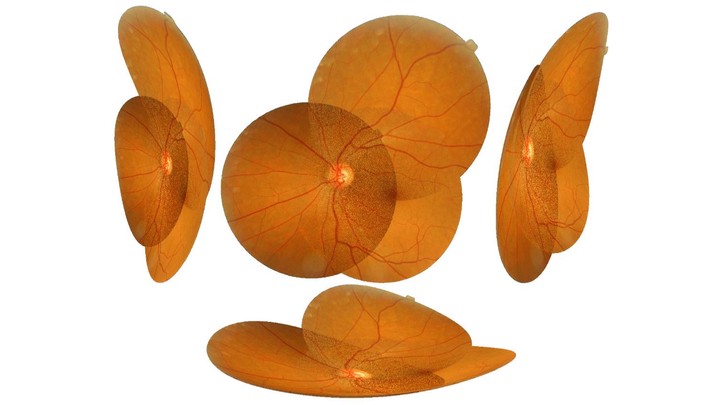Retinal Image Registration through 3D Eye Modelling and Pose Estimation

Abstract
The in vivo assessment of small vessels can promote accurate diagnosis and progression monitoring of diseases related to vasculopathy, such as hypertension anddiabetes. Given that the human eye retina contains small vessels that can be directly imaged via fundoscopy, the analysis of retinal structures becomes very important for non-invasive approaches. This is also important for the diagnosis of illnesses that affect eyesight, such as macular edema, age-related macular degeneration or glaucoma. This analysis can be greatly facilitated by accurate retinal image registration.
Image registration is applied upon a pair of images, the reference and the testimage. The goal is to warp the test image so that it images retinal points at the same 2D locations as the reference image. This is a challenging task, mainly for two reasons. The first is related to the perspective distortions due to the curved shape of the retina and change of the camera pose relative to the eye between image acquisitions. The second relates to potential changes in the retina that occur due to retinopathy between temporally distant image acquisitions. In addition, the nature of the application demands for high registration accuracy.
Registration methods may benefit from knowledge of the type of images to be registered. In this work, we proposed a registration framework that simultaneously estimates the relative pose of the cameras that acquired the retinal images as well as the shape and the pose of the eye. The proposed framework, which has been made publicly available, is evaluated quantitatively and is shown to outperform state-of-the-art methods.
In the context of this work, we also developed a set of tools for generating realistic 3D eye models. These tools were used to render synthetic retinal image pairs, utilized for testing and evaluating the proposed registration approach. Additionally, FIRE, a dataset comprised of pairs of real retinal images has been compiled and made publicly available. FIRE consists of three types of images, each one covering different challenges in retinal image registration. To enable the experimental, quantitative evaluation of the accuracy of a registration method, FIRE is annotated with ground truth point correspondences.
In this work, we also explored the suitability of the proposed registration framework for applications such as longitudinal studies, image mosaicing and super resolution. Additionally, the fitness of the framework for performing eye shape estimation is studied. Pertinent experiments show encouraging results as well as ample room for further improvement.